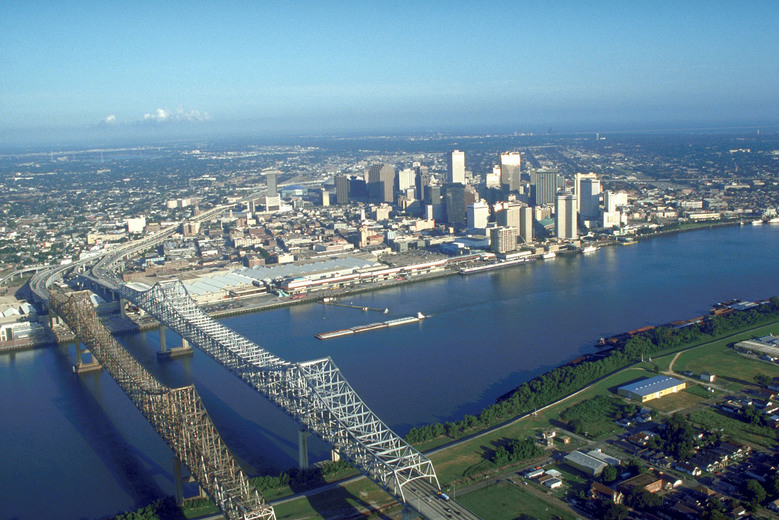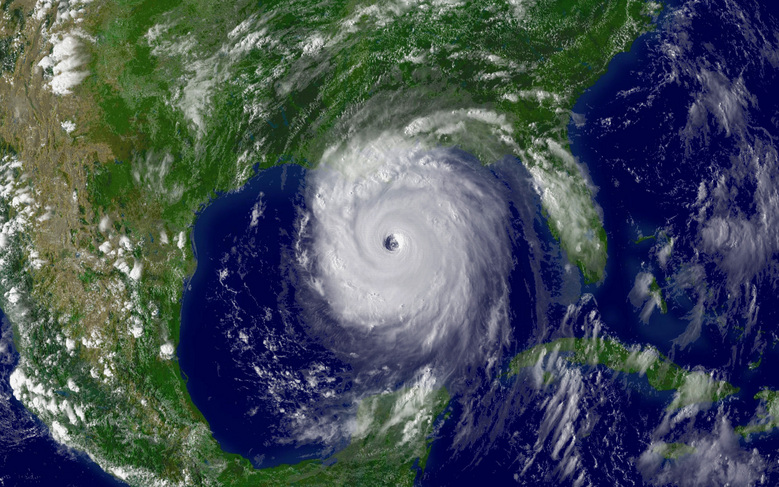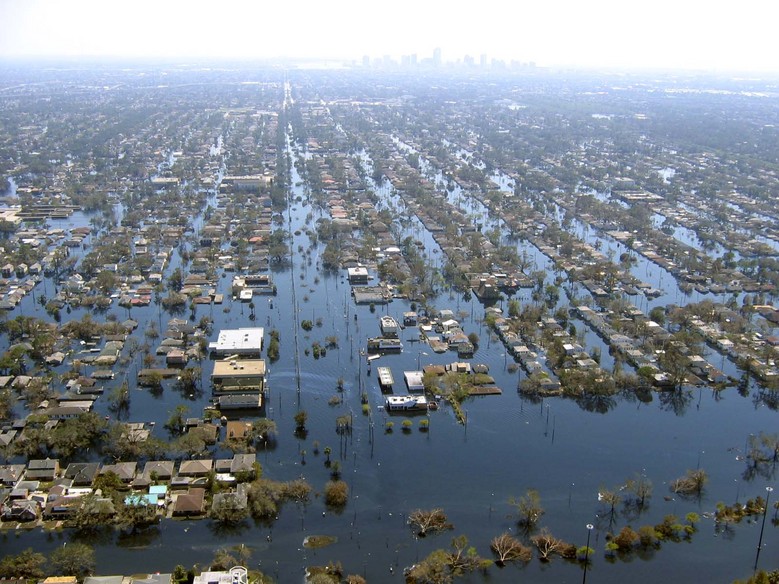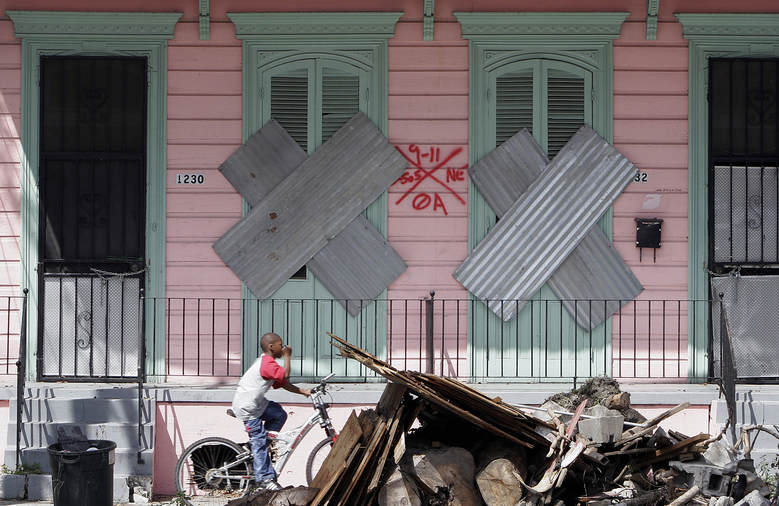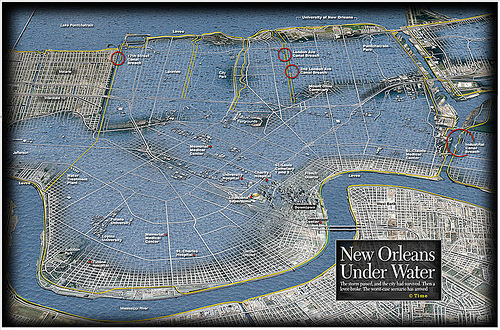Eight Months Now
It is now the eight-month mark in time since Hurricane Katrina made her uninvited presence into New Orleans. It was three months ago since I last wrote about my impressions of what is happening here. I am pleased to announce that things are now not as bleak as they were then. I am equally pleased to say that we have finally gone past that mid-tunnel darkness to the point where you can start to see the first glimmers of light at the end.
The heartbeat of the city is registering on the cardiac monitor. You can feel its pulse. We’re awakening from the coma that had rendered so many New Orleanians into a seemingly perpetual state of practical and psychological limbo. There are more and more people walking the downtown streets. Vehicular traffic is not what it once was, but on the rise. (There were aspects of that thinning out that I actually was beginning to enjoy.) Most of the traffic lights are now working. We’d all become accustomed to the four-way stop. The usual annoyances of the passengers on public transportation are returning to the point where I’m no longer just paying attention to my book and the constant notices of the ubiquitous bathtub ring on the houses along the way. I never thought that huge piles of waterlogged debris on the side of the road would give me joy, but they’re a sign that people are coming back and are starting to renovate the wreckage of their homes and preparing to live here once again.
As far as New Orleans’ economy is concerned, especially related to tourism and conventions, which is so important here, the welcome mat has been dusted off and placed on the front doorstep. The first corporate guests have overcome their timidity and are beginning to schedule their conferences in the hotels. The Convention Center is almost ready to resume normal operations. Grant it, many associations are sending scouts down first to survey the area, but they’re scouting nonetheless. Many individual visitors who have been longing to come for a visit are beginning to do so, especially since the city has remarkably rebounded enough to beautifully host major public events like Mardi Gras, the French Quarter Festival and the New Orleans Jazz and Heritage Festival, which is still underway. The areas of the city where most of these people stay and visit are almost completely back to normal. The neighborhoods that flooded are a different story.
The city itself still isn’t certain what is to become of the most severely devastated regions. There is still a lot of uncertainty regarding official F.E.M.A. floodplain maps which will determine if certain houses will have to be raised or razed. Many residents are going ahead anyway frustrated with the colossal expanse of time that it has taken for an official plan of action to be produced and approved. One of the catalysts that I am particularly proud of is the grass roots effort of all of the individual neighborhood associations who have taken it upon themselves to reorganize and pull together to strengthen their clout with City Hall. And City Hall is paying attention. In Gentilly where I live, and I didn’t know this before the storm, there are eighteen different neighborhood associations that a very savvy group of concerned citizens are consolidating into the Gentilly Improvement Association. These are the people who will be ultimately responsible for saving and preserving our beloved neighborhoods. This organizing of the grass roots couldn’t have come at a better time; the election day of our Mayor and City Council.
Our primary election was held on April 22nd, 2006. In keeping with the colorful politics of Louisiana, it’s going to be an interesting runoff. Incumbent Mayor Ray Nagin, an African American businessman came in first with thirty-eight percent of the vote. Lieutenant Governor Mitch Landrieu, the white son of former Mayor Moon Landrieu and brother of U.S. Senator from Louisiana Mary Landrieu, came in second with twenty-nine percent of the vote. Mayor Nagin’s challenge is to increase the voting populous of African Americans. Remember, most of them are still displaced. People found it inconvenient to vote here. Imagine how difficult it’s going to be to get them to vote in “Utah.” Landrieu’s challenge is to get the crossover vote. He has to appeal to both blacks and whites. As much as I wish it weren’t the case, race still does play a very vital role in who gets elected.
This puts New Orleans at a very unique crossroads. With seventy some odd percent of pre-Katrina New Orleans being African American, this could be the first time in thirty years in which a white person may actually have a chance at being elected Mayor.
Regarding race relations, it dismays me continuously that so many people are still divided along racial terms. When are people going to stop viewing their realities based on cultural identity? There is trust, honor and integrity to be found amongst every culture in the world. Many people still cling to old distrusts that have existed for centuries. For me, it’s time to let it go. We have to make our choices thoughtfully and carefully that will hopefully benefit everyone as we try to recreate and preserve, with an intelligent vision toward the future, a unique, diversified and modern conception of what we want and should know what the new New Orleans should be.
Our biggest concern right now is whether or not we are actually prepared for the upcoming hurricane season. Floodgates are being installed at the mouths of the 17th Street Canal and the London Street Canal, both of which breached and led to the catastrophic flooding of Orleans Parish. The gates are designed to prevent any storm surge from flowing into these canals that caused their breaches after Katrina. I’m not sure of what’s being done to the Industrial Canal levee that devastated the Lower 9th Ward. At this point, Plaquemines and St. Bernard Parishes cannot be guaranteed protection. New Orleans has hosted the Dutch Delegation of Engineers who is responsible for the designing and maintaining of the state of the art system that protects The Netherlands from flooding. I’ve spoken to one of them who assured me that New Orleans could certainly be protected. They are farther below sea level than we are.
One thing that I do know is certain. If during this hurricane season another powerful storm even shows the remotest possibility of even thinking about heading our way, we’ll see the biggest mass exodus of people trying to get out of this city since Moses led the Israelites out of Egypt. Something tells me that most of us will be a little leery about going into that parted Red Sea.
It is now the eight-month mark in time since Hurricane Katrina made her uninvited presence into New Orleans. It was three months ago since I last wrote about my impressions of what is happening here. I am pleased to announce that things are now not as bleak as they were then. I am equally pleased to say that we have finally gone past that mid-tunnel darkness to the point where you can start to see the first glimmers of light at the end.
The heartbeat of the city is registering on the cardiac monitor. You can feel its pulse. We’re awakening from the coma that had rendered so many New Orleanians into a seemingly perpetual state of practical and psychological limbo. There are more and more people walking the downtown streets. Vehicular traffic is not what it once was, but on the rise. (There were aspects of that thinning out that I actually was beginning to enjoy.) Most of the traffic lights are now working. We’d all become accustomed to the four-way stop. The usual annoyances of the passengers on public transportation are returning to the point where I’m no longer just paying attention to my book and the constant notices of the ubiquitous bathtub ring on the houses along the way. I never thought that huge piles of waterlogged debris on the side of the road would give me joy, but they’re a sign that people are coming back and are starting to renovate the wreckage of their homes and preparing to live here once again.
As far as New Orleans’ economy is concerned, especially related to tourism and conventions, which is so important here, the welcome mat has been dusted off and placed on the front doorstep. The first corporate guests have overcome their timidity and are beginning to schedule their conferences in the hotels. The Convention Center is almost ready to resume normal operations. Grant it, many associations are sending scouts down first to survey the area, but they’re scouting nonetheless. Many individual visitors who have been longing to come for a visit are beginning to do so, especially since the city has remarkably rebounded enough to beautifully host major public events like Mardi Gras, the French Quarter Festival and the New Orleans Jazz and Heritage Festival, which is still underway. The areas of the city where most of these people stay and visit are almost completely back to normal. The neighborhoods that flooded are a different story.
The city itself still isn’t certain what is to become of the most severely devastated regions. There is still a lot of uncertainty regarding official F.E.M.A. floodplain maps which will determine if certain houses will have to be raised or razed. Many residents are going ahead anyway frustrated with the colossal expanse of time that it has taken for an official plan of action to be produced and approved. One of the catalysts that I am particularly proud of is the grass roots effort of all of the individual neighborhood associations who have taken it upon themselves to reorganize and pull together to strengthen their clout with City Hall. And City Hall is paying attention. In Gentilly where I live, and I didn’t know this before the storm, there are eighteen different neighborhood associations that a very savvy group of concerned citizens are consolidating into the Gentilly Improvement Association. These are the people who will be ultimately responsible for saving and preserving our beloved neighborhoods. This organizing of the grass roots couldn’t have come at a better time; the election day of our Mayor and City Council.
Our primary election was held on April 22nd, 2006. In keeping with the colorful politics of Louisiana, it’s going to be an interesting runoff. Incumbent Mayor Ray Nagin, an African American businessman came in first with thirty-eight percent of the vote. Lieutenant Governor Mitch Landrieu, the white son of former Mayor Moon Landrieu and brother of U.S. Senator from Louisiana Mary Landrieu, came in second with twenty-nine percent of the vote. Mayor Nagin’s challenge is to increase the voting populous of African Americans. Remember, most of them are still displaced. People found it inconvenient to vote here. Imagine how difficult it’s going to be to get them to vote in “Utah.” Landrieu’s challenge is to get the crossover vote. He has to appeal to both blacks and whites. As much as I wish it weren’t the case, race still does play a very vital role in who gets elected.
This puts New Orleans at a very unique crossroads. With seventy some odd percent of pre-Katrina New Orleans being African American, this could be the first time in thirty years in which a white person may actually have a chance at being elected Mayor.
Regarding race relations, it dismays me continuously that so many people are still divided along racial terms. When are people going to stop viewing their realities based on cultural identity? There is trust, honor and integrity to be found amongst every culture in the world. Many people still cling to old distrusts that have existed for centuries. For me, it’s time to let it go. We have to make our choices thoughtfully and carefully that will hopefully benefit everyone as we try to recreate and preserve, with an intelligent vision toward the future, a unique, diversified and modern conception of what we want and should know what the new New Orleans should be.
Our biggest concern right now is whether or not we are actually prepared for the upcoming hurricane season. Floodgates are being installed at the mouths of the 17th Street Canal and the London Street Canal, both of which breached and led to the catastrophic flooding of Orleans Parish. The gates are designed to prevent any storm surge from flowing into these canals that caused their breaches after Katrina. I’m not sure of what’s being done to the Industrial Canal levee that devastated the Lower 9th Ward. At this point, Plaquemines and St. Bernard Parishes cannot be guaranteed protection. New Orleans has hosted the Dutch Delegation of Engineers who is responsible for the designing and maintaining of the state of the art system that protects The Netherlands from flooding. I’ve spoken to one of them who assured me that New Orleans could certainly be protected. They are farther below sea level than we are.
One thing that I do know is certain. If during this hurricane season another powerful storm even shows the remotest possibility of even thinking about heading our way, we’ll see the biggest mass exodus of people trying to get out of this city since Moses led the Israelites out of Egypt. Something tells me that most of us will be a little leery about going into that parted Red Sea.
